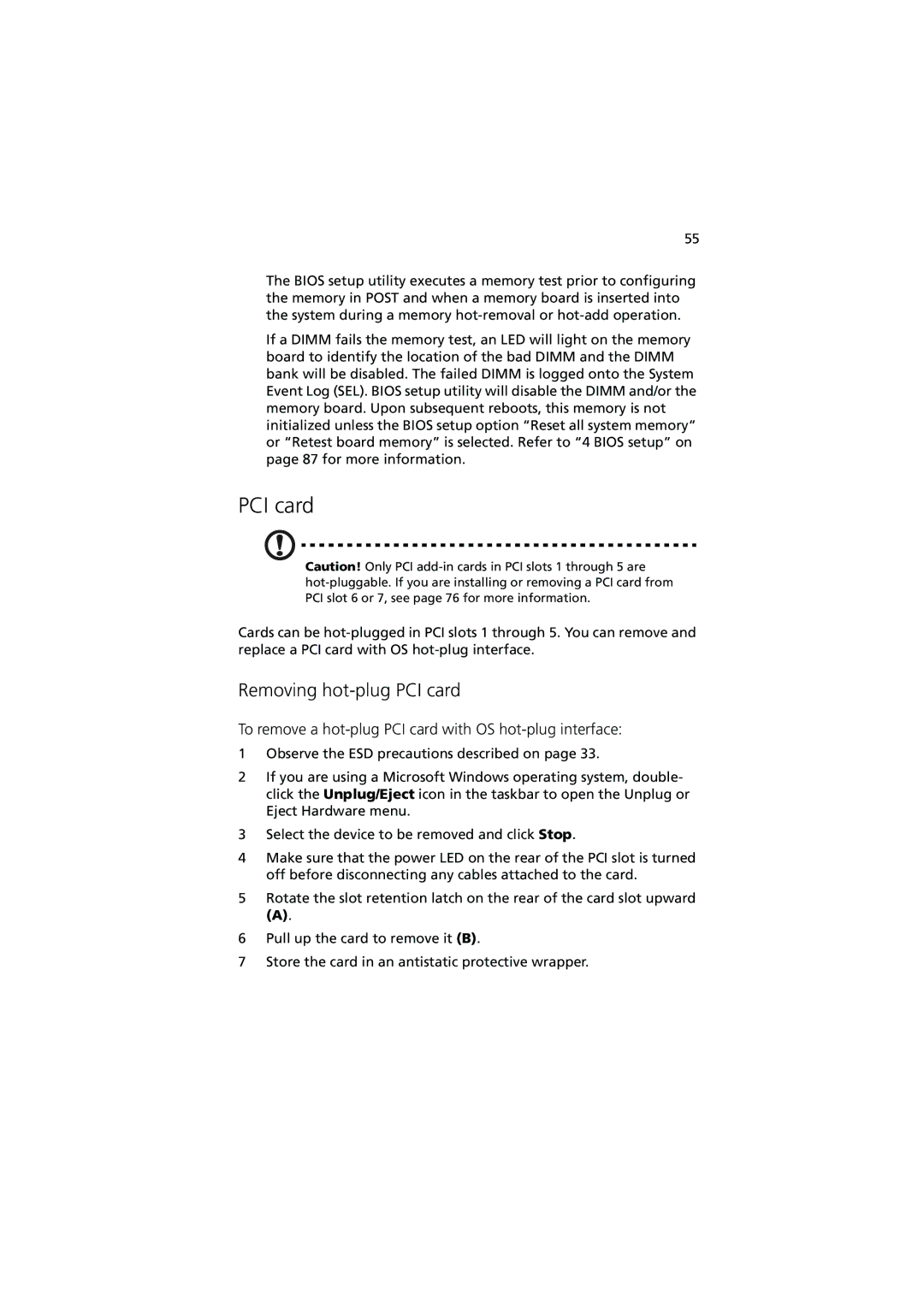55
The BIOS setup utility executes a memory test prior to configuring the memory in POST and when a memory board is inserted into the system during a memory
If a DIMM fails the memory test, an LED will light on the memory board to identify the location of the bad DIMM and the DIMM bank will be disabled. The failed DIMM is logged onto the System Event Log (SEL). BIOS setup utility will disable the DIMM and/or the memory board. Upon subsequent reboots, this memory is not initialized unless the BIOS setup option “Reset all system memory” or “Retest board memory” is selected. Refer to “4 BIOS setup” on page 87 for more information.
PCI card
Caution! Only PCI
Cards can be
Removing hot-plug PCI card
To remove a hot-plug PCI card with OS hot-plug interface:
1Observe the ESD precautions described on page 33.
2If you are using a Microsoft Windows operating system, double- click the Unplug/Eject icon in the taskbar to open the Unplug or Eject Hardware menu.
3Select the device to be removed and click Stop.
4Make sure that the power LED on the rear of the PCI slot is turned off before disconnecting any cables attached to the card.
5Rotate the slot retention latch on the rear of the card slot upward
(A).
6Pull up the card to remove it (B).
7Store the card in an antistatic protective wrapper.
